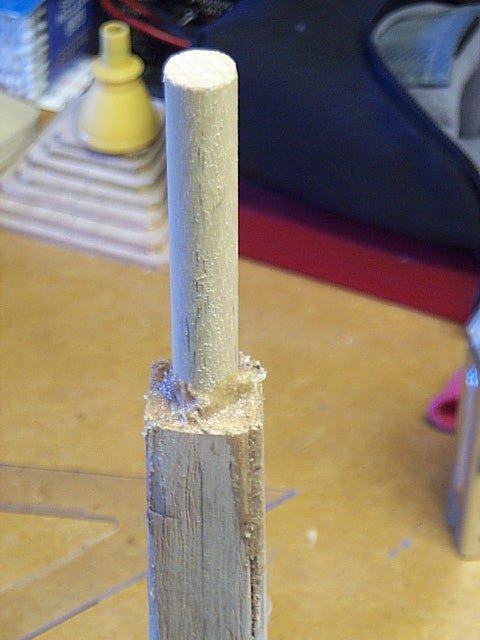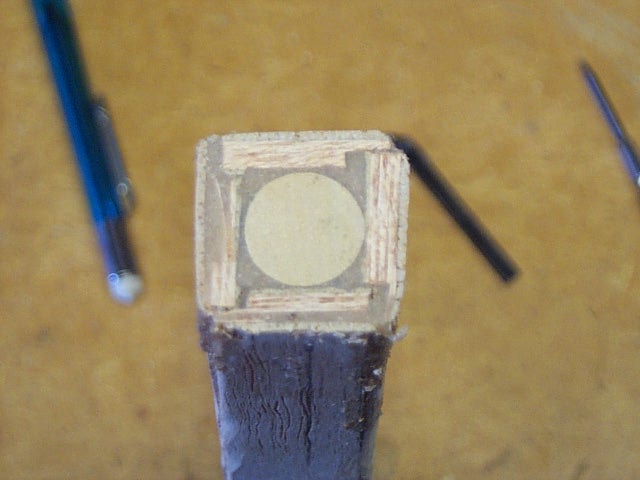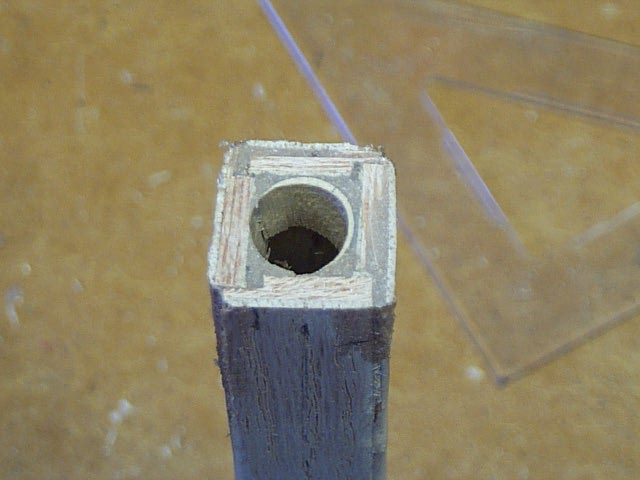Bore out the dowel, using a 1/2" bit. It is advisable to first drill
a small pilot hole in the dowel, to guide the larger bit and keep it centered.
In the photo, it is obvious that the drill deviated slightly from center,
leaving a small amount of the dowel. There was no way to correct this without
either making the hole too large, or making it oblong in shape. It worked
out fine as shown.
This receiver will accept either a modern mouthpiece from a trombone,
baritone or euphonium. It will also accept most authentic or reproduction
serpent mouthpieces.
Serpent mouthpieces usually have very short shanks, and they will end
close to where the receiver ends; a good fit! Modern mouthpieces have much
longer shanks, and they will extend well past the end of the receiver.
If a modern mouthpiece is expendable, try cutting off the extra shank.
Always insert the mouthpiece shank into the receiver with a firm twisting
motion, in order to achieve an airtight seal.
All photos made using a Kodak DC240 digital
camera.
Go to next chapter





